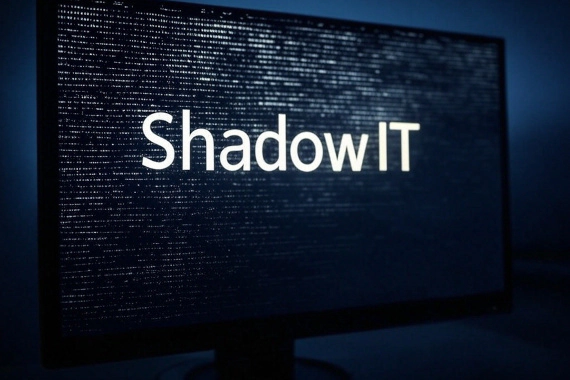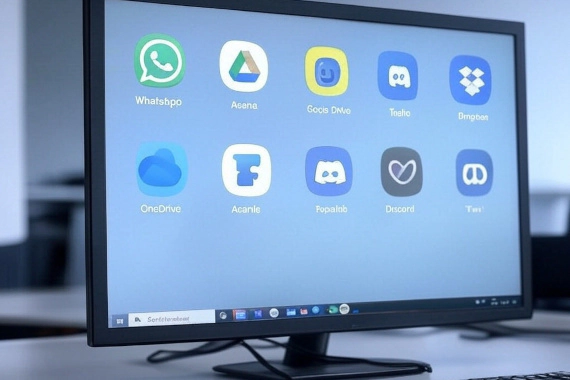
Creating a Shadow IT Policy: A Step-by-Step Guide
What is shadow IT and why is it a problem? Shadow IT refers to software that employees use for work without the …

A data leak is a security incident that exposes sensitive data to an unauthorized party.
Common examples of sensitive data exposed include passwords, personal information, or financial data.
Weak security practices, accidental exposure, or human error often cause data leaks.
Data leaks can lead to full-scale breaches, identity theft, and ransomware attacks.
In this post, we’ll explain how data leaks happen, how cybercriminals exploit them, and how to prevent data leaks in your organization.
The terms “data leak” and “data breach” are often confused. They have distinct differences.
A data leak is an unintentional exposure of sensitive data. A data breach is a deliberate attack.
Data leaks are often due to human error. Data breaches are usually caused by attackers stealing data by breaking into a system.
An example of a data leak is an employee accidentally sending an email containing personal information to the wrong person.
A data breach example might be a hacker using leaked credentials to break into a database and leak its contents.
Both a data leak and a data breach can have the same results.
The main difference is in the intent and method used.
A data leak is usually accidental.
A data breach is intentional and involves malicious actions to access or steal data.
Data leaks happen in various ways. They are often due to a mix of [human error](https://www.breachsense.com/blog/data-breach-human-error/) and technical flaws. Some common causes include:
Misconfigured Security Settings: Misconfigured databases, servers, or cloud services can expose sensitive data.
Accidental Sharing: Employees may accidentally email sensitive information to the wrong person.
Third-Party Risks: Vendors who get hacked may leak your data as part of their breach.
Unsecured Websites and Applications: Weak security in websites or apps can be exploited. Vulnerabilities, like Insecure Direct Object Reference or SQL Injection can allow access to sensitive data.
Phishing Attacks: Deceptive emails or messages can trick employees into revealing sensitive information.
Insider Threats: Disgruntled or careless employees may intentionally or accidently leak data.
Lost or Stolen Devices: Laptops, smartphones, and external drives with sensitive data can be lost or stolen.
Improper Disposal: Not disposing of old devices and storage media properly can expose data to anyone who finds them.
All types of sensitive data can be a target for a data leak. The most common types of data leaked include:
Login Credentials: Usernames and passwords that can provide access to secure systems.
Personal Identifiable Information (PII): Names, addresses, Social Security numbers, and birth dates. These are some examples of personal details that can help identify an individual.
Financial Information: Credit card numbers, bank account details, and investment records are common targets.
Health Records: Medical histories, treatment information, insurance details, and other sensitive health-related data.
Intellectual Property: Trade secrets, patents, proprietary research, product designs, and other sensitive business information.
Emails and Communications: Private emails and messages may contain sensitive content.
Government and Legal Documents: Classified information, legal documents, and other sensitive government-related data.
Corporate Data: Business strategies, financial reports, employee records, and other internal corporate information.
It’s crucial to protect this type of data. It can help prevent identity theft, fraud, and reputational damage.
Depending on the type of information leaked, attackers often exploit data leaks for:
Obviously, there are privacy concerns whenever sensitive data is leaked.
Beyond that though, there are several ways data leaks can affect your organization.
Leaked financial data, like credit card or bank account info, can lead to financial fraud.
Data leaks can expose personal information. This can lead to identity theft and long-term issues for victims.
Organizations often suffer from reputational harm as well. The loss of customer trust can severely impact the bottom line.
Organizations can face regulatory fines and lawsuits for failing to protect sensitive information.
Data leaks often harm trust with customers and partners. This is especially true when critical systems or data are breached.
Finally, leaked data often helps cybercriminals launch further attacks, like phishing or ransomware.
RECOMMENDED READING: The biggest data leak examples
Once data has been leaked, it can’t truly be “unleaked.”
Once sensitive information is exposed online, it’s often copied and shared. It’s now stored on many platforms, making it impossible to remove.
Even if it’s deleted from one place, it may be stored elsewhere. There’s no way to ensure it hasn’t been copied elsewhere.
After a data leak, the best use of energy is to take steps to protect yourself.
Change your passwords. Monitor your accounts. Enable security measures, like multi-factor authentication, to help prevent future misuse.
Preventing data leaks requires a combination of technical controls, employee training, and organizational policies.
As with most things in cybersecurity, it’s critical to get the basics down right.
Make sure you have an updated asset inventory. All software should get automatic updates and be regularly applied.
Run periodic security audits and pen tests to find vulnerabilities.
Next, identify where your sensitive data is stored and classify its business value.
Once you know what needs protecting, set up role-based access controls (RBAC).
This will limit access to only those who need it.
Verify that sensitive data is encrypted both at rest and in transit.
This will protect it from unauthorized access.
Once the basics are covered, deploy DLP (data loss prevention) tools.
They will monitor and control the movement of sensitive data across the network.
This will prevent unauthorized access or transfer.
Make sure you have an incident response plan before an incident occurs.
This will enable you to quickly respond to data leaks and mitigate their impact.
Implement a policy requiring the use of password managers.
In addition, multi-factor authentication should enabled wherever its supported.
Assess the risk of your third-party vendors who can access your data.
Do they meet your security standards?
Continuously monitor the dark web for any leaked data associated with your organization.
Early detection can enable you to mitigate the risk before criminals exploit it.
Need visibility into the dark web to find your leaked data? Book a demo to see how Breachsense helps security teams stop leaked data from being exploited.

What is shadow IT and why is it a problem? Shadow IT refers to software that employees use for work without the …

What are the Risks of Shadow IT When it comes to Shadow IT, there are five primary risks that it introduces into …